Rob Hafen
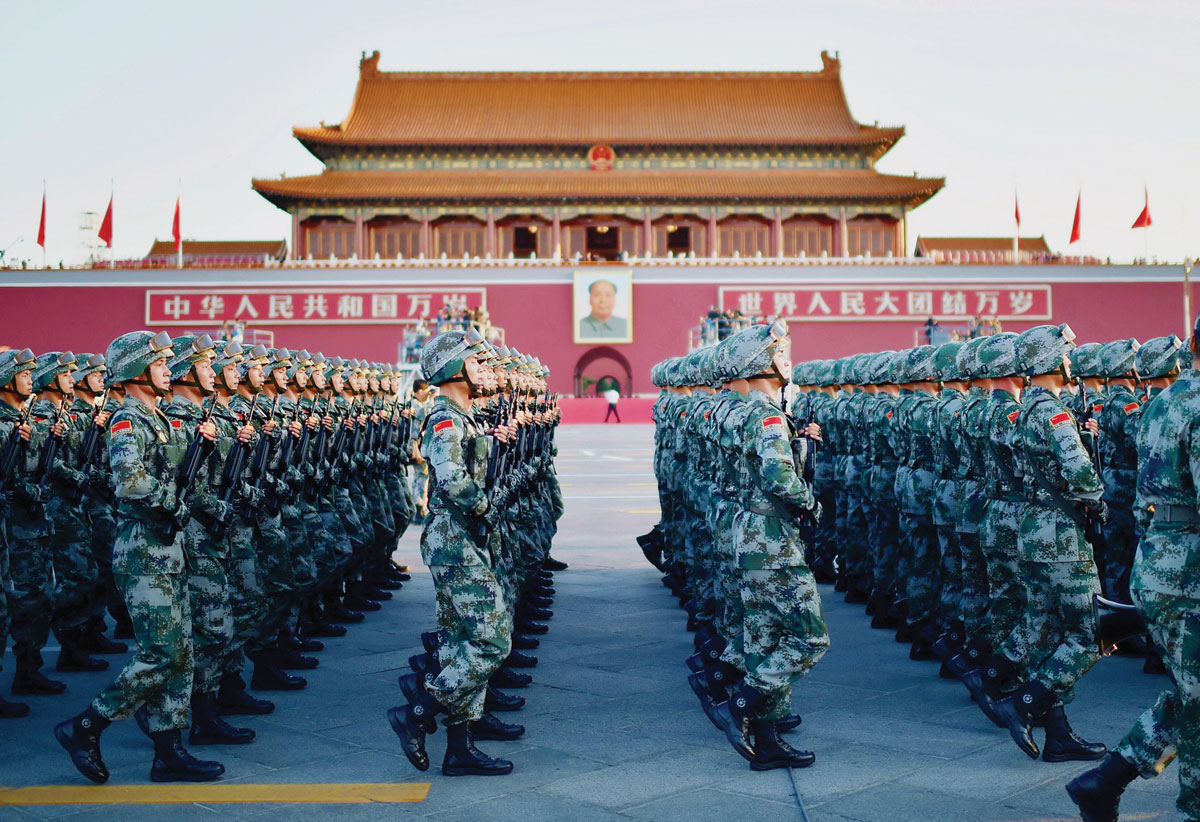
Chinese soldiers march past the six-centuries-old Tian’anmen Rostrum during a military parade on 3 September 2015 in Beijing to commemorate the seventieth anniversary of China’s victory against Japanese aggression. Although the modern Chinese military is considered to be a pacing threat by the United States, Chinese doctrine draws from over 2,500 years of military history and theory. (Photo by Imaginechina, Alamy Stock Photo)
American military colleges like the U.S. Army War College and Command and General Staff School spend a great deal of time studying the Western, or American, way of war. Although U.S. national security documents identify China as our pacing challenge and with over 2,500 years of Chinese military history and theory to draw from, the American military spends very little time learning about the Chinese way of war. At the Command and General Staff School, there is only one elective course on the Chinese way of war with a U.S. Indo-Pacific Command training scenario put in place for academic year 2024.
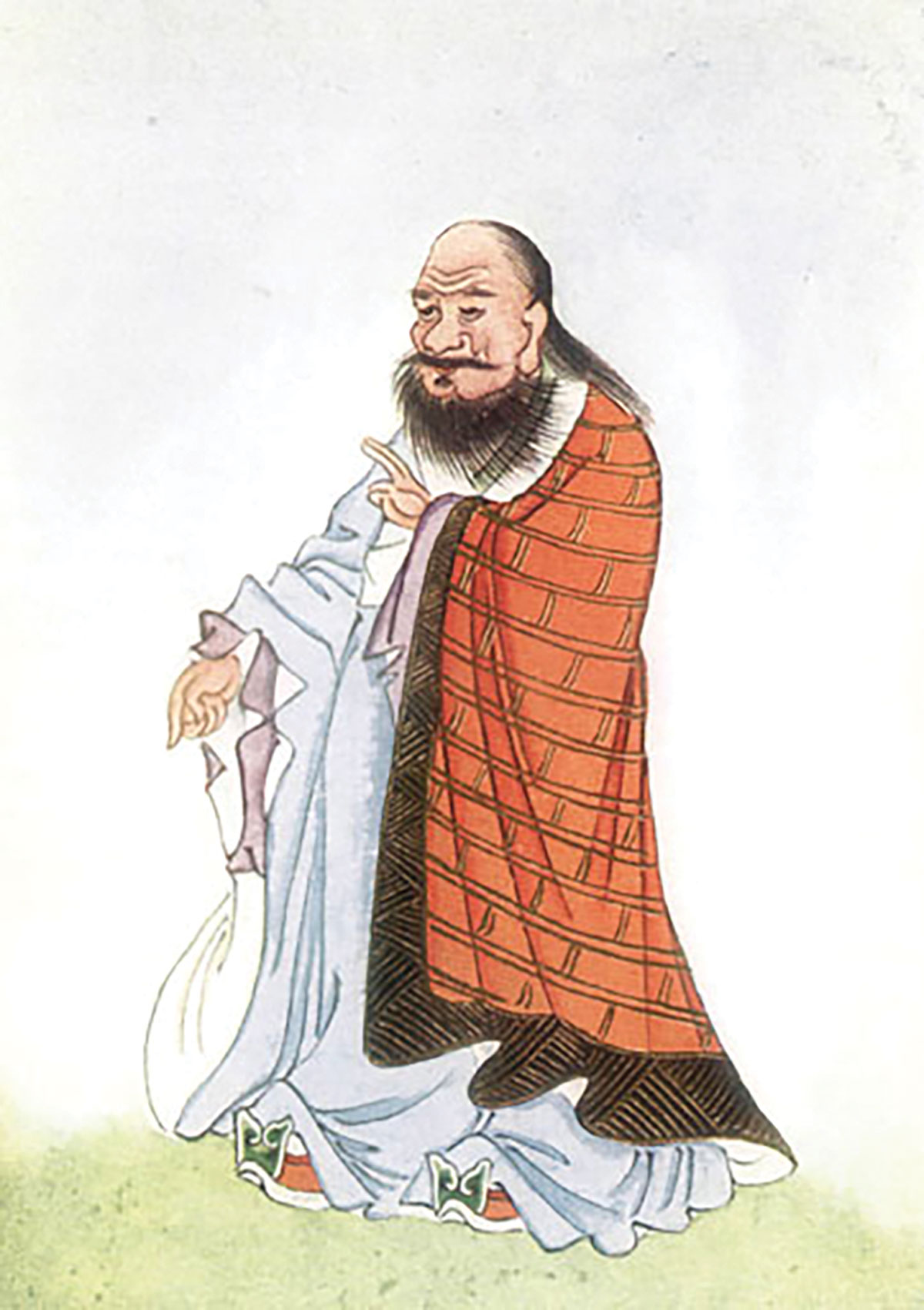
Depiction of Lao Tzu in E. T. C. Werner’s Myths and Legends of China (Project Gutenberg, February 1922). (Image courtesy of Wikimedia Commons)
Most American military officers are told to read Sun Tzu’s Art of War at their precommissioning source. This classical work is one of the world’s most influential books on military strategy and is highly instructive on Chinese strategic, operational, and tactical art. It was compiled toward the end of China’s preunification spring and autumn period (772–476 BCE) and the beginning of the warring states period (475–221 BCE).1 However, it only scratches the surface of Chinese military thought. Other theorists such as Confucius, Lao Tzu, Mao Zedong, and many others contribute to a diverse and complex array of Chinese strategic theory.
Is there a difference between the American way of war and the Chinese way of war in the current strategic environment? Scholars have argued the intricacies of the East-West cultural and philosophical divide for centuries. Clearly, there are some major cultural and philosophical differences. In the current environment, however, both the United States and China are great power actors in the international system drawing from similar theoretical, doctrinal, materiel, and organizational means of national power. For example, the founder of the modern People’s Republic of China (PRC), Mao Zedong, drew just as much if not more from Prussian theorist Carl von Clausewitz’s On War as he did from Sun Tzu’s Art of War.2 During the last twenty-five years, the People’s Liberation Army (PLA) invested deeply in modern information and weapons technology, training, education, and organization, attempting to bring its land, air, maritime, cyber, and space capabilities to parity with the United States. China’s heavy investment in antiaccess/area denial (A2/AD) capabilities is causing the American military to look at new materiel and organizational solutions for a potential conflict over Taiwan.3 However, there is an important difference between the Chinese and American approaches to solving strategic, operational, and tactical problems. Where the American military tends to focus on high-cost, technology-centric solutions, over 2,500 years of Chinese military history and theory reveals a preference for low-cost, human-centric solutions.
Looking at the U.S. Army’s technology-focused multidomain operations concept as outlined in U.S. Army Field Manual (FM) 3-0, Operations, will illustrate the difference in each country’s approach. This article will analyze key concepts from China’s feudal and dynastic periods using Sun Tzu’s Art of War and a distillation of China’s thirty-six stratagems. Finally, this article will look at modern Chinese operational art as demonstrated by Mao during the Chinese Civil War (1946–1949) and as outlined in Qiao Liang and Wang Xiangsui’s Unrestricted Warfare, published in 1999. Generally, when operational art is referenced in this article, strategic and tactical art are implied as well.
The U.S. Army’s Technology-Focused, Multidomain Operations Concept
The introductory chapter of the U.S. Army’s recently published capstone doctrinal manual, FM 3-0, highlights the importance of the land domain to decisive strategic outcomes. However, it also recognizes that the land domain requires combined arms employment in the air, maritime, cyber, and space domains to achieve success. This convergence of effects from all domains is known as multidomain operations (MDO).4 MDO recognizes the immense challenge for U.S. forces needing to win outnumbered, while isolated, by creating and exploiting positions of relative advantages. Chinese operational art espouses isolation of adversaries, and they are already working toward achieving that capability with their A2/AD umbrella. The MDO concept was developed primarily as a way for joint forces to defeat China’s A2/AD systems.5
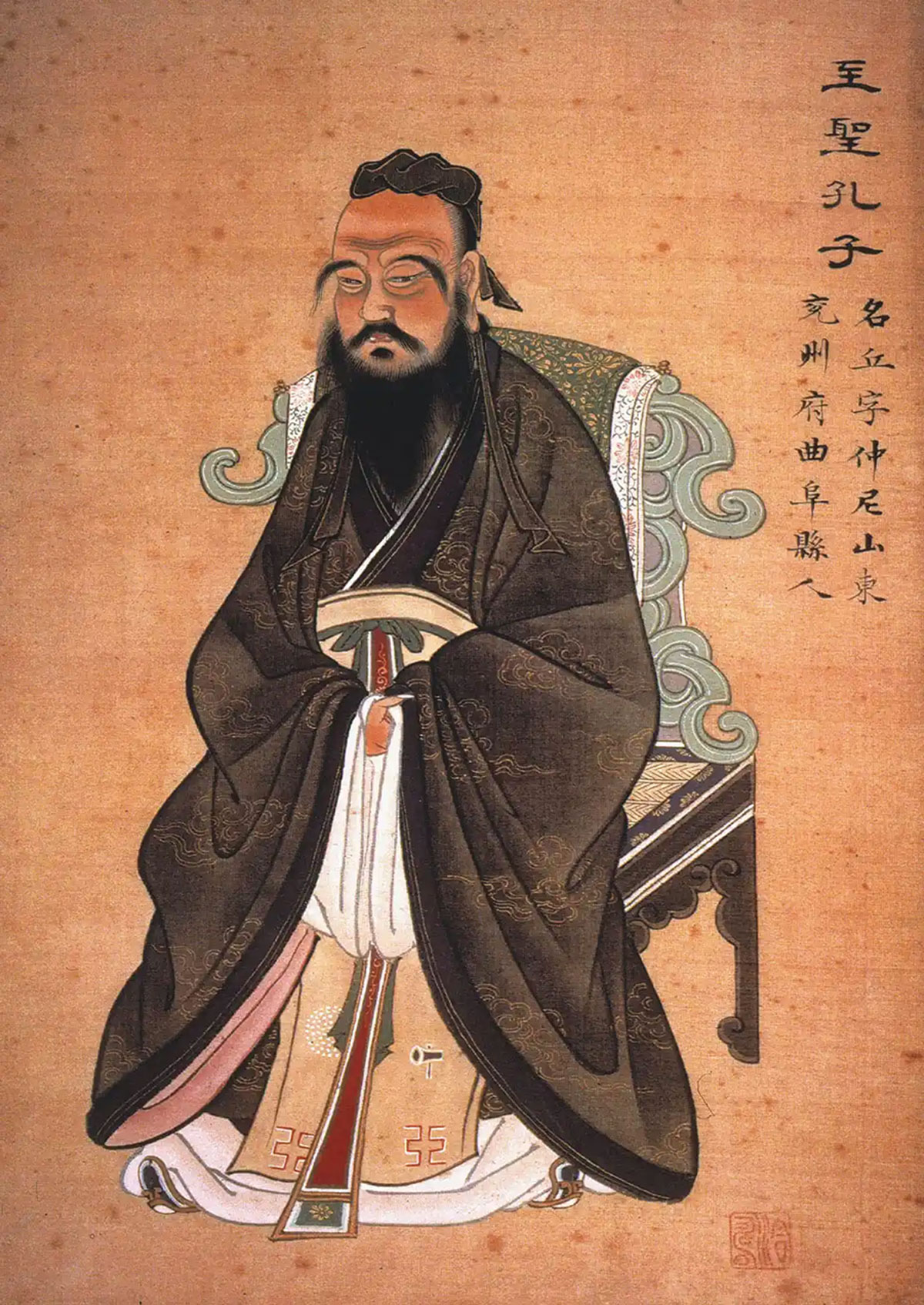
Confucius circa 1770 (Image courtesy of Wikimedia Commons)
The MDO concept also introduces three dimensions: physical, information, and human. The physical dimension includes “the material characteristics and capabilities, both natural and manufactured, within an operational environment.”6 The information dimension is defined as “the content, data, and processes that individuals, groups, and information systems use to communicate.”7 The human dimension is defined as “encompassing people and the interaction between individuals and groups, how they understand information and events, make decisions, generate will, and act within an operational environment.”8 All three dimensions are interrelated, interdependent, and impact all domains. However, most of FM 3-0 is dedicated to acting in the physical dimension. The MDO concept relies heavily on innovative, technology-focused solutions leveraging space, cyber, artificial intelligence, robotics, unmanned systems, and extended range firepower.
Although FM 3-0 addresses the human and information dimensions, there is very little development of how the U.S. Army plans to create relative advantage to exploit these dimensions and how they relate to the practice of operational art, deception, psychological operations, and information operations. In the introductory chapter, FM 3-0 recognizes the complex current environment that demands leaders who understand both the science and art of operations:
There is no way to eliminate uncertainty, and leaders must exercise operational art to make decisions and assume risk. Intangible factors, such as the impact of leadership on morale, using shock effect to defeat enemy forces, and supportive populations are fundamentally human factors that can overcome physical disadvantages and often decide the outcomes of an operation.9
If operational art and human factors are so decisive, why is there so little mention of them in the 2022 version of FM 3-0?
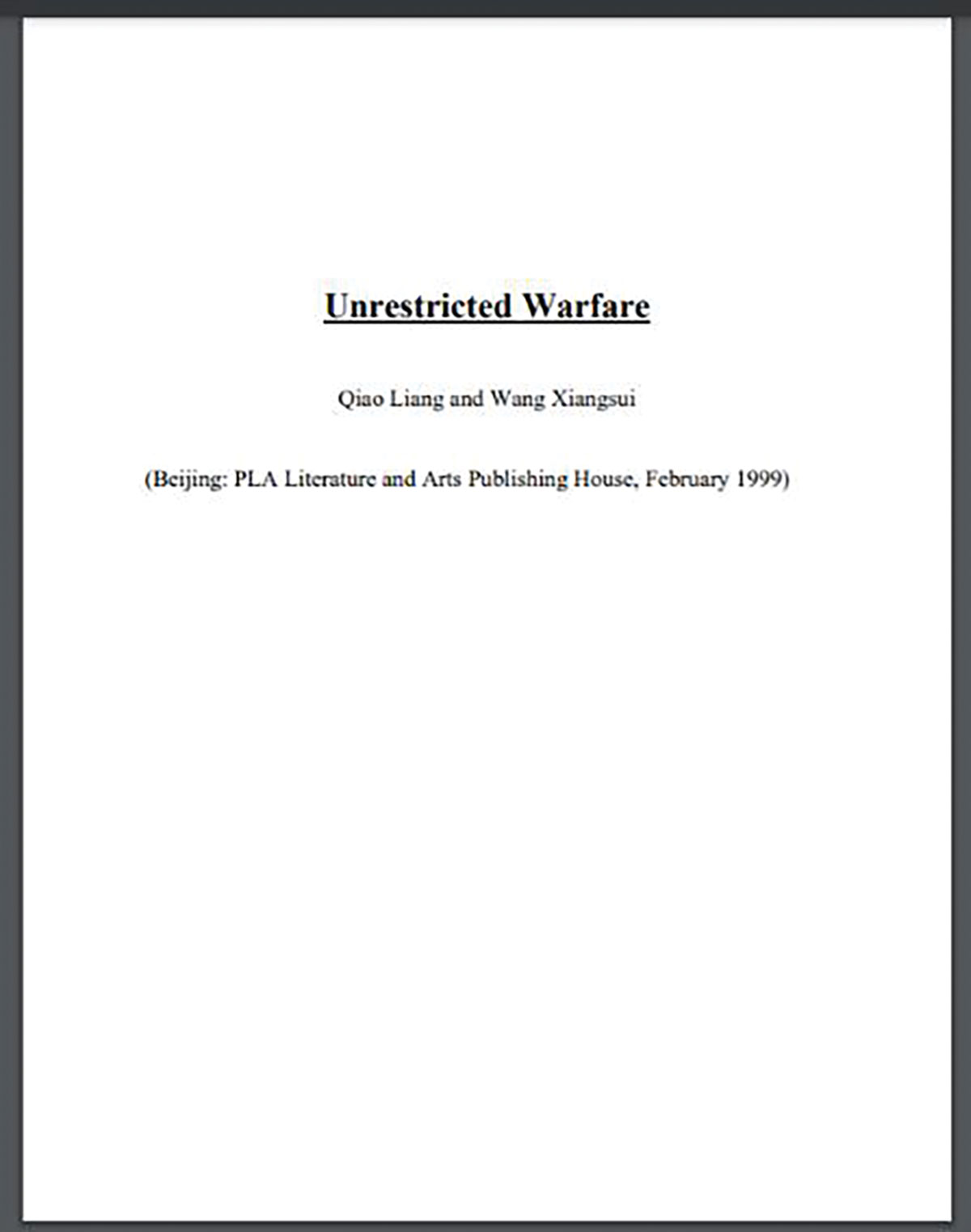
Read Unrestricted Warfare by Qiao Liang and Wang Xiangsui (Beijing: PLA Literature and Arts Publishing House, February 1999) online at https://citeseerx.ist.psu.edu/doc/10.1.1.169.7179.
In the previous 2017 version of FM 3-0, the idea of operational art was addressed with a few pages in the introduction.10 Information operations, military deception, and military information support operations were also covered in chapter two.11 In the 2022 version, explanations of these concepts and capabilities are removed. The 2022 version of FM 3-0 outlines a Clausewitzian view of the nature of war in the introduction by highlighting war’s political purpose, its inherent chaos and uncertainty, and that it is a human endeavor.12 It also adds informational considerations to mission variables, defined as “aspects of the human, information, and physical dimensions that affect how humans and automated systems derive meaning from, use, act upon, and are impacted by information.”13 However, the only significant application of operational art and the human domain in the 2022 version of FM 3-0 is in a two-page section on defeat and stability mechanisms.14 This lack of focus on operational art, human, and informational factors in warfare is consistent with the American military’s preference for high-tech, high-cost, materiel solutions to solve strategic, operational, and tactical problems.
Sun Tzu’s Art of War
The global influence of Sun Tzu’s Art of War on strategists, operational artists, and tacticians cannot be overstated. A Jesuit missionary, Father Joseph-Marie Amiot, brought Sun Tzu’s work to the West with his 1782 translation into French.15 It was first translated into English by Lionel Giles in 1910 and then by Samuel B. Griffith in 1963. However, it has guided military thought in East Asia for millennia. Edward O’Dowd and Arthur Waldron stated that “the strategic patterns based on Sun Tzu’s writing are deeply embedded in the thinking of Sinicized Asian nations.”16 Many Western military professionals have a cursory and superficial understanding of Sun Tzu’s work. Military scholars must delve deep into the historical, cultural, and philosophical context of fourth century BCE China to understand the unique characteristics of Chinese operational art espoused in Art of War. Understanding the diverse and sometimes conflicting Chinese philosophies of Taoism, Confucianism, and legalism sheds light on Sun Tzu’s sometimes cryptic maxims.
To decode the Art of War, the four key concepts of tao (often translated as “the Way”), shih, cheng, and ch’i should be appreciated. The first paragraphs of Art of War state, “Warfare is the greatest affair of the state, the basis of life and death, the tao to survival or extinction.”17 Sun Tzu lists the tao as the first of the five factors a general officer needs to evaluate before embarking on a campaign. He goes on to elaborate that the tao causes soldiers to be fully in accord with their leader, not fearing danger, and willing to die with him.18 This would imply that the tao consists of the intangible moral force or spirit that binds a nation or army together. In Western military thought this is known as esprit de corps, morale, or fighting spirit. Recognizing the tao of war is directly related to understanding the human dimension of warfare. In another paragraph, Sun Tzu states, “Warfare is the tao of deception. When capable, display incapability. When committed to employing your forces, feign inactivity.”19 The art of deception resides fully in the human dimension and psychology. Deception and defeat both take place in the mind of the national leader, commander, or military forces. This tao of warfare in Sun Tzu’s operational art places priority on intangible effects and ways to exploit the human dimension.
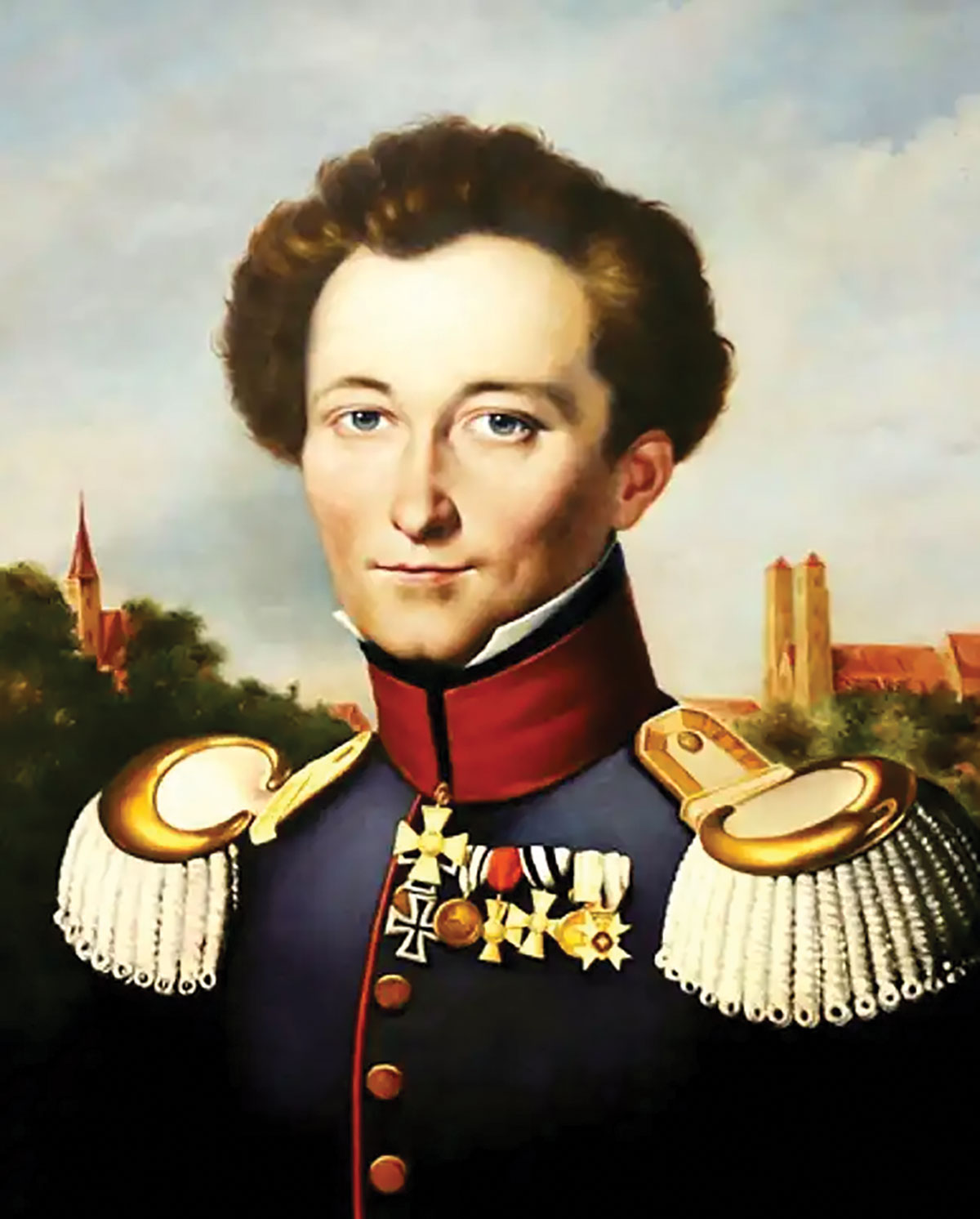
Carl Philipp Gottfried von Clausewitz, 1 June 1780 (Image courtesy of Wikimedia Commons)
Shih is the next concept that is key to understanding Art of War. In Ralph D. Sawyer’s translation, shih is translated as strategic power. “After estimating the advantages in accord with what you have heard, put it into effect with strategic power (shih).”20 Timothy L. Thomas translates it as strategic advantage.21 This concept is often compared to the sudden onrush of water coming down from mountains after a rainstorm or water bursting from a break in a large dam. It creates an immense reservoir of potential energy. When released at the right time and turned into kinetic energy, it creates an irresistible flow, allowing a general or political leader to prevail over his enemies. Using the well-known axiom from Art of War of knowing yourself, your enemy, and the terrain, a leader can find or create advantages to exploit.22 Shih is comparable to the current focus in the U.S. Army’s MDO concept of creating and exploiting relative advantages.23 However, for Sun Tzu, this is not done just by looking for materiel, firepower, or terrain advantages. It is equally important to create strategic, operational, and tactical advantages to exploit in the human dimension using your own troops, people, and political leaders as well as those of allies and adversaries.
The concepts of cheng and ch’i are also crucial for understanding Sun Tzu’s operational art. These concepts are similar to the dualistic Taoist ideas of yin and yang. Cheng refers to orthodox, regular, conventional, substantial, or usual ways and means of solving military problems. Ch’i denotes unorthodox, irregular, unconventional, or unusual ways and means.24 Like two sides of the same coin, cheng and ch’i need to be used together to gain victory. This passage from Art of War shows how they interact.
In battle one engages with the cheng and gains victory through the ch’i. Thus, one who excels at sending forth the ch’i is as inexhaustible as Heaven, as unlimited as the Yangtze and Yellow rivers ... The notes do not exceed five, but the changes of the five notes can never be fully heard. The colors do not exceed five, but the changes of the five colors can never be completely seen. The flavors do not exceed five, but the changes of the five flavors can never be completely tasted. In warfare the strategic configurations of power do not exceed the cheng and ch’i, but the changes of the ch’i and cheng can never be completely exhausted. The ch’i and cheng mutually produce each other, just like an endless cycle. Who can exhaust them?25
Comparable to the science and art of war, the physical and human dimensions, or tangible and intangible forces, the skillful use of mutually supporting cheng and ch’i is essential for Sun Tzu’s concept of operational art.
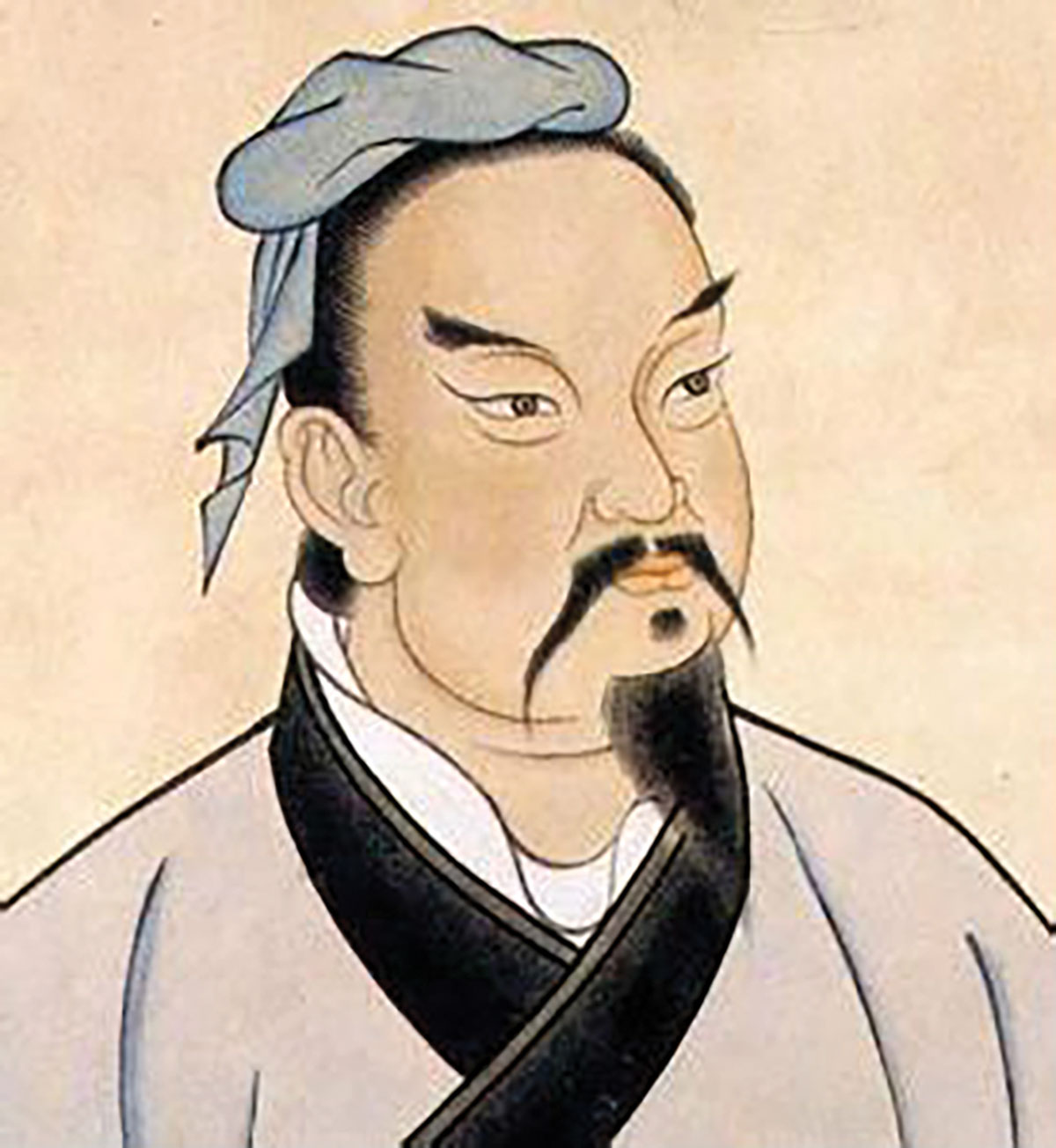
Qing-era representation of Sun Tzu (Image courtesy of Wikimedia Commons)
One often-quoted maxim from Art of War is “subjugating the enemy’s army without fighting is the true pinnacle of excellence.”26 When thinking operationally or tactically, this approach seems very difficult and unreasonable. If forces have already been committed to battle, how can operational or tactical commanders win without fighting? However, from a strategic perspective, Sun Tzu’s proverb makes a great deal of sense. Sun Tzu emphasizes that it is most preferred to attack the enemy’s plans, then their allies, then their army, and lastly their fortified cities.27 The first two, plans and allies, are strategic level objectives that attack an enemy’s moral center of gravity. O’Dowd and Waldron identify this as attacking the political harmony of an adversary. They argue the Chinese way of winning without fighting was to use psychological warfare to sow chaos in the enemy’s society, economy, domestic politics, alliances, and military readiness. If an adversary’s state was in chaos, the legitimacy of the political leadership would be called into question, making them vulnerable to internal rebellion or invasion.28 The Chinese Communist Party’s (CCP) current strategy seems to be very focused on the psychological human and information dimensions at the strategic level.29 The American strategy of deterrence through strength, alliances, and forward-deployed forces is another example of a psychological strategy designed to prevent an adversary from deciding to use force in the first place.
In summary, most military professionals read Sun Tzu’s Art of War to glean the universal strategic, operational, and tactical concepts that still apply to warfare today. However, to truly comprehend how the work informs Chinese thought, we need to appreciate the fundamental philosophical context and concepts developed in China 2,500 years ago.30 This contextual knowledge is further illustrated by China’s thirty-six stratagems.
China’s Thirty-Six Stratagems
The following selections from China’s thirty-six stratagems will show the Chinese preference for exploiting the human dimension by using espionage, deception, manipulation, psychological warfare, and information warfare. The thirty-six stratagems are a collection of expressions on political and military strategy dating back to predynastic China, passed down through written and oral histories. They were not compiled into a single volume until sometime in the seventeenth century CE when an anonymous scholar published them in a book called Secret Art of War: Thirty-Six Strategies.31 Sun Haichen’s The Wiles of War and Harro Von Senger’s The Book of Stratagems deliver two comprehensive English versions with various historical vignettes and analysis to help us understand these distinctly Chinese proverbs. The following list shows some of the most relevant stratagems illustrating the current CCP strategic approach and possibilities for PLA operational art.
Strategic Stratagems Using Elements of National Power
Borrow a corpse for the soul’s return. This implies taking an institution, technology, method, historical narrative, or ideology that has been forgotten or discarded and revive it to boost the morale and fervor of the population and the troops.32 A prime example of this is the powerful “century of humiliation” historical narrative that blames Western colonialism for the deterioration of dynastic China and the civil chaos that followed. The CCP and PLA continue to use this narrative to inspire nationalistic achievement and competition with the West as well as justify their Taiwan reunification policy.
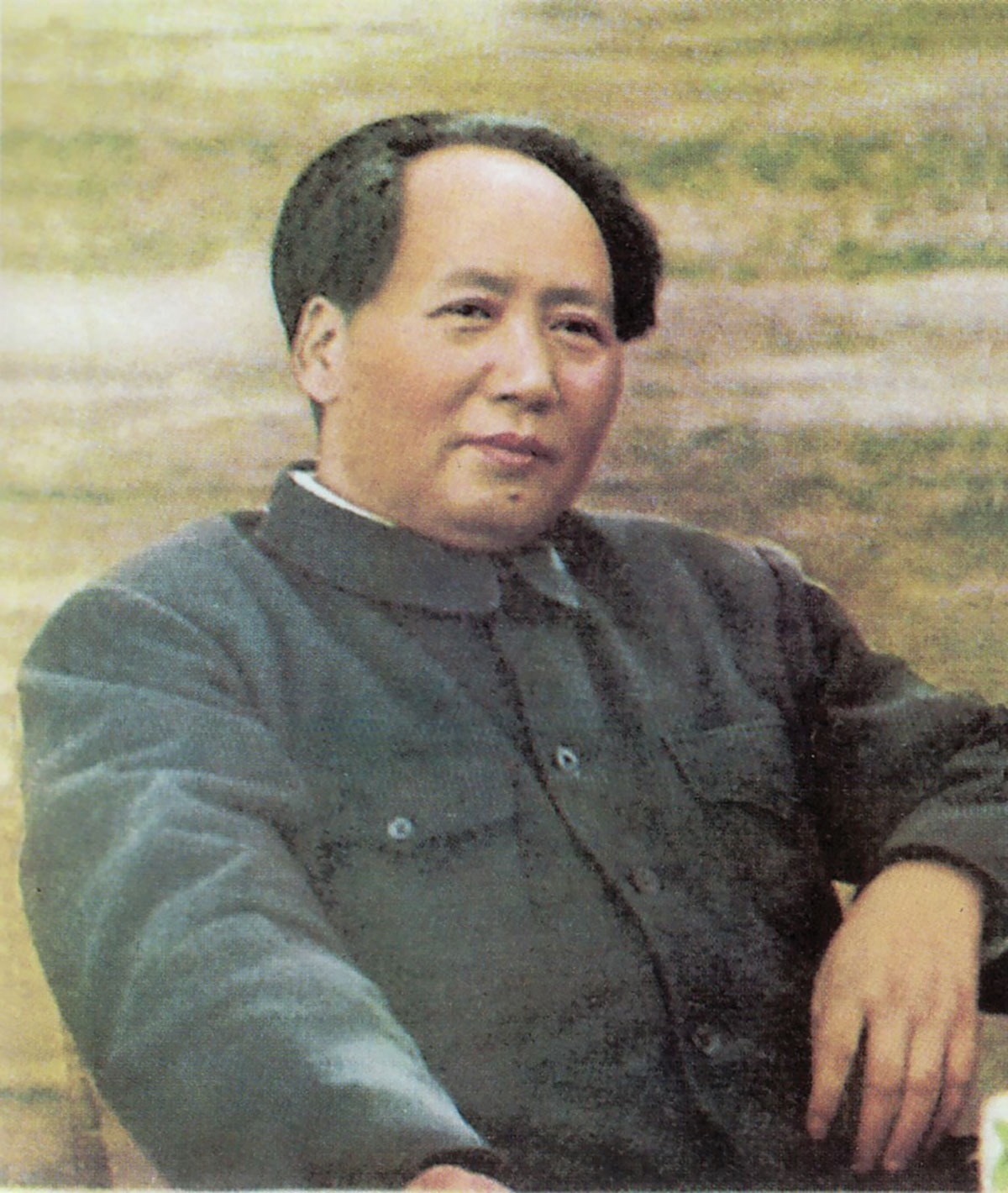
Photo of Mao Zedong sitting, originally published in Quotations from Chairman Mao Tse-Tung circa 1955. (Photo courtesy of Wikimedia Commons)
Observe the fire on the opposite shore. Here the strategist recommends a delay in entering a conflict until the other parties become exhausted by fighting amongst each other. Then go in at full strength to finish them off or gain the dominant position.33 Xi Jinping’s relationship with Vladimir Putin is an example of this. Xi is giving Putin tacit support but watching patiently while Russia and NATO exhaust themselves in Ukraine.
Kill with a borrowed knife. The idea here is to cause damage to the enemy via a third party.34 Possible use of this stratagem would be the CCP using Russia, North Korea, Iran, or potentially a terrorist group to distract the United States or dilute any response to a Taiwan invasion.
Hide your dagger behind a smile. This stratagem is the charm offensive. Ingratiate yourself with your adversary. When their trust is gained, move against them in secret.35 This is clearly demonstrated by China’s neocolonialist economic policy and Belt and Road projects that have tied into the global economy and influenced Western business to invest under Chinese rules. The current American crisis with cyber security, Chinese data mining, and semiconductor manufacturing is a result of trusting the PRC did not have malevolent intentions until it was too late.
The cicada sloughs its skin. This implies either leaving one’s distinctive traits behind and becoming inconspicuous or masquerading as something or someone else.36 It is demonstrated by the PRCs transition from a communist command economy to state capitalism with a market export economy in the 1980s. Most Western scholars expected China’s political system to liberalize along with its economic policy, however that clearly did not happen.
Loot a burning house. When a country is plagued by internal problems such as disease, famine, corruption, and crime, it is ill-equipped to deal with an outside threat. If one uses the “hide your dagger behind a smile” stratagem to start the fire or add fuel to it, so much the better.37 This stratagem is a key component of the PRC’s information and cyber warfare efforts. As the world struggles with the COVID-19 pandemic, governance crises, cyber security, misinformation, inflation, debt, and economic crises, China continues to leverage data collection and use information and cyber warfare to inflame the West’s woes. Chinese technology companies, pervasive in foreign markets, are increasingly integrating with the PRCs data storage, processing, control, and security systems. This exposes huge swaths of the world’s population to a broad spectrum of Chinese data accumulation, espionage, and manipulation.38 According to Matt Pottinger, the primary aim of China’s strategy of information dominance is “dismantling American influence around the globe.”39 By using a combination of these stratagems, the CCP is doing everything it can to strengthen the courage, will, and morale of its own people and troops, while weakening that of its adversaries.
Operational and Tactical Stratagems
Besiege Wei to rescue Zhao. When the enemy is too strong in one place, attack so they will be forced to defend one another. Avoid the enemy’s strength; instead, strike at their weakness elsewhere and prepare to ambush them. This will exhaust your enemy and will give you a much higher chance of success.40 A possible use of this stratagem would be to facilitate a crisis in another part of the world or Pacific region like the Korean peninsula to tie up American forces before China makes its move to seize Taiwan.
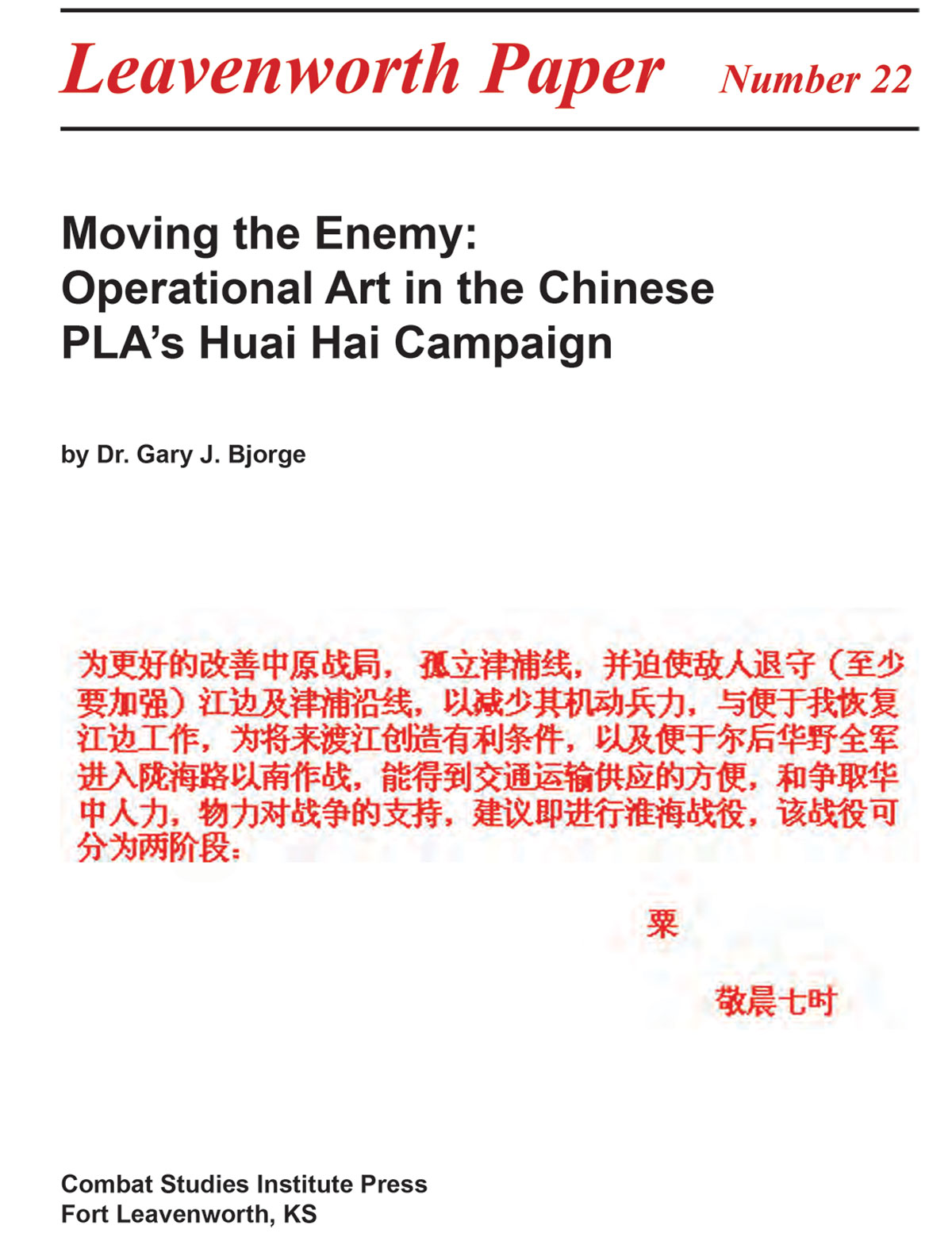
Read Moving the Enemy: Operational Art in the Chinese PLA’s Huai Hai Campaign by Dr. Gary J. Bjorge (Leavenworth Paper #22) online at https://www.armyupress.army.mil/Portals/7/combat-studies-institute/csi-books/bjorge_huai.pdf.
Clamor in the east, attack in the west. Even when face-to-face with an enemy, surprise can still be employed by attacking where they least expect it. Create an expectation in the enemy’s mind using a feint or demonstration. Manipulate the enemy to focus their resources elsewhere before attacking an inadequately defended area.41 This tactical stratagem is very similar to the more operational besiege Wei to rescue Zhao stratagem.
Lure the tiger down from the mountain. Never directly attack an opponent whose advantage is derived from their position. Instead, lure them away from their position to separate them from their source of strength.42 In any conflict with China, American forces would start at a disadvantage due to extended sea and ground lines of communication.
Climb up the roof and remove the ladder. With baits and deceptions, lure the enemy into complex terrain and cut off their lines of communication and escape routes. To save themselves, they must fight both their own forces and the elements of nature.43 A good example of this is from the Korean War where PLA forces attacked during the winter and enveloped the United Nations forces after they reached the limits of their operational reach in northern Korea.44
Seize the opportunity to lead the sheep away. While carrying out operations, be flexible enough to take advantage of any opportunity that presents itself, however small, to create a relative advantage.45 Similar to “loot a burning house,” this stratagem refers to seizing every opportunity that presents itself like luring allies away from your enemy.
Bolt the door to seize the thief. When planning to deliver the final blow to the enemy, plan carefully for success; do not rush into action. First, cut off the enemy’s escape routes and any routes for external aid.46 During the Chinese civil war and the Korean War, the PLA showed clever use of these six operational and tactical stratagems. Avoiding enemy strengths, using maneuver to surround enemy forces, finding, creating, and exploiting relative advantages, and the use of feints and demonstrations are all critical components of Chinese operational art.
Chinese Operational Art
In his work, Moving the Enemy, Gary Bjorge argues that operational art is not about technology; rather, it is about human thought. The practice of operational art requires the intangible factors of experience, instinct, and intuition. “The ability to visualize, anticipate, create, and seize opportunities does not reside in a computer data base.”47 He goes on to show how the PLA under Mao Zedong practiced this human-dimension-focused operational art throughout the decisive Huai Hai Campaign (1948–1949) during the Chinese civil war. This large campaign involved over a million military forces. When the campaign was over, the PLA had defeated five nationalist armies and was directly threatening the nationalist capital of Nanjing. Later, in 1949, Chiang Kai-shek and his nationalists were forced to flee to the island of Formosa (Taiwan).48 Although the American-supported nationalists had a larger military force, greater air power, and better equipment, the communists had many human dimension advantages they exploited very effectively.
One critical advantage the communists had was political and military cohesion. They effectively used the Japanese invasion and communist ideology to politically unify areas they controlled and their military forces. The Huai Hai campaign was led by Chen Yi, Liu Bocheng, Su Yu, Tan Zhenlin, and Deng Xiaoping. Since these leaders fought together for decades, they developed a high level of trust and confidence in each other. Mao trusted these operational commanders and allowed them to plan and execute the campaign with little interference.49 On the other hand, the nationalists were plagued by factionalism, communist infiltration, and corruption. Chiang Kai-shek was a micromanager who held most decisions at his level. He also did not appoint an operational command to oversee all land, maritime, and air forces involved in the campaign.50 This human dimension difference allowed the communists to make decisions and maneuver to positions of advantage much more rapidly than the deliberate and inflexible nationalist forces.
A second advantage for the communists was better information and intelligence that allowed them to maneuver their forces at a higher tempo than the nationalists. Due to communist collaborators within the nationalist headquarters and Army commands, the PLA knew where the nationalist armies were, where they were moving to, and how they would react. They used this knowledge, combined with speed, timing, and a flexible logistics system to gain a numerical superiority at decisive points during their offensives around Xuzhou. Communist logistics were not tied to rail and major road networks like the nationalists. Since Xuzhou was a major north-south and east-west railroad junction, it was critical for the nationalists to maintain control of it. When the communist forces had the nationalist Seventh Army surrounded east of Xuzhou, Chiang Kai-shek sent two more armies to relieve the Seventh. The communist commanders anticipated this and prepared a plan to surround and defeat the two other nationalist armies sent north. Bjorge relates this back to Sun Tzu and the concept of shih or strategic advantage outlined earlier. The communists were able to recognize the potential energy (shih) in the situation and maneuver their forces to surround and annihilate three nationalist armies instead of just one.51
The PLA leaders during the Huai Hai campaign were well versed in modern military theory as well as Sun Tzu’s Art of War. As Bjorge reasons, they understood human psychology and how to motivate and manipulate others. They knew how to use the right combinations of cheng (fixing/holding) and ch’i (maneuver/surprise) forces to proactively move the enemy, instead of moved by him.52 This demonstrates a high level of operational art that is focused on exploiting the human dimension.
In the current global environment, the PRC continues to apply its legacy of operational art handed down from Sun Tzu. Qiao and Wang’s 1999 book, Unrestricted Warfare, put the world on notice that a resurgent China was ready to challenge the American led world order using all means at their disposal. However, this willingness to exploit the internet, financial institutions, media, trade policy, the United Nations, and other global organizations is not anything new.53 It is just a modern extension of Chinese strategic and operational art that looks creatively at all domains, dimensions, and elements of national power to achieve its strategic goals.
Conclusion
The modern American military can afford to focus on high-cost technology-centric solutions, but that may not always be the case. As demonstrated recently in Ukraine, the Army with the greatest amount of high-tech weaponry does not always win. Morale, cohesion, training, leadership, intelligence, information, deception, and many other intangible and uncertain human factors are at play when the instrument of war is unleashed. There is much we can learn from Chinese military history and theory when it comes to the human dimension and practicing the art of deception. China’s preference for low-cost human-centric solutions comes from thousands of years of practicing warfare. Now they have the resources to invest in high-tech weaponry as well. If they are successful at combining the latest weapons technology with their human-centric operational art, China will be a formidable foe on the battlefield.
Rather than just a cursory reading of Sun Tzu’s Art of War, Western military professionals must do more to learn from China’s immense experience so we can know our adversary. U.S. Army doctrine should expand on the ways Army forces and commanders can exploit the human dimension during competition, crisis, and conflict. Finally, the U.S. Army needs to reincorporate operational art into its capstone doctrine with a focus on the human and information dimensions, operational and tactical deception, and defeat and stability mechanisms.
No comments:
Post a Comment